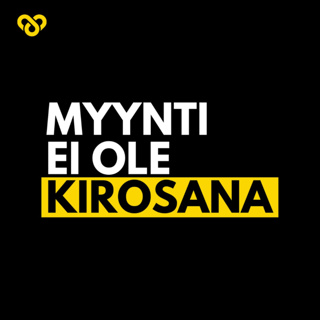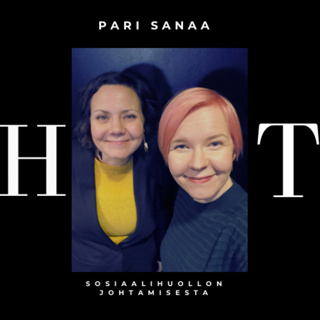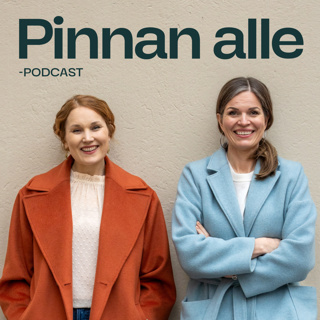
132. Lean Into Failure: How to Make Mistakes That Work
Effective and productive teams and relationships are based on the ability to communicate safely and to fail successfully. In this episode, Amy Edmondson, a professor at Harvard Business School and author of The Right Kind of Wrong: The Science of Failing Well, shares profound insights on the different types of failure—basic, complex, and intelligent—and their implications for learning and innovation. In her conversation with host and Strategic Communications lecturer Matt Abrahams, Edmonson opens up about her struggles with failure, highlighting the importance of moving from rumination to reflection. This episode offers listeners a comprehensive guide to fostering an environment where failure is not feared but embraced as a crucial step toward growth and success.Episode Reference Links:Amy EdmondsonAmy’s Books: The Fearless Organization & Right Kind of Wrong Ep.21 Words Matter: How to Make Your Communication InclusiveEp.112 From Mistakes to "Missed Takes"Connect:Premium Signup >>>> Think Fast Talk Smart PremiumEmail Questions & Feedback >>> hello@fastersmarter.ioEpisode Transcripts >>> Think Fast Talk Smart WebsiteNewsletter Signup + English Language Learning >>> FasterSmarter.ioThink Fast Talk Smart >>> LinkedIn, Instagram, YouTubeMatt Abrahams >>> LinkedIn ********This episode is sponsored by Grammarly. Let Grammarly take the busywork off your plate so you can focus on high-impact work. Download Grammarly for free today
5 Maalis 202428min

131. Friction Fixing: How to Use Obstacles to Your Advantage
Friction — that’s Professor Huggy Rao’s metaphor for the forces that hamper workplace efficiency. But as he says, some friction can be helpful — if you know how to use it.In his book, The Friction Project: How Smart Leaders Make the Right Things Easier and the Wrong Things Harder, Rao and coauthor Robert I. Sutton explore how operational obstacles show up in the workplace and, more importantly, what we can do about them. Through what Rao calls “friction fixing,” leaders can “take out the bad friction to make the right things easy to do [and] put in good friction to make the wrong things harder [to do].”As Rao discusses with host Matt Abrahams on this episode of Think Fast, Talk Smart, leaders can eliminate bad friction through good communication. “Communication matters a lot,” he says. “The simple rule is, make sure a 10-year-old can understand it on the first try.”Episode Reference Links:Huggy RaoHuggy’s Book: The Friction ProjectEp.14 Be Better at Work: How to Communicate Better with Coworkers and EmployeesConnect:Premium Signup >>>> Think Fast Talk Smart PremiumEmail Questions & Feedback >>> hello@fastersmarter.ioEpisode Transcripts >>> Think Fast Talk Smart WebsiteNewsletter Signup + English Language Learning >>> FasterSmarter.ioThink Fast Talk Smart >>> LinkedIn, Instagram, YouTubeMatt Abrahams >>> LinkedIn ********This episode is sponsored by Grammarly. Let Grammarly take the busywork off your plate so you can focus on high-impact work. Download Grammarly for free today
27 Helmi 202426min

130. Rethinks: How to Maintain a Powerful Presence in Your Communication
“Simple language, forceful language, vivid language, and keeping it simple and direct,” says Professor Jeffrey Pfeffer, are all powerful tools to strengthen your communication.Host and Stanford Graduate School of Business lecturer Matt Abrahams interviews Pfeffer, the author many books, including Power: Why Some People Have It and Others Don't, about the verbal and nonverbal ways we can harness, or give away, our authority when we’re speaking to others. Pfeffer is also the host of the podcast Pfeffer on Power and teaches the Stanford GSB online course Discover the Paths to Power. Episode Reference Links:Jeffrey Pfeffer's podcast: Pfeffer on PowerJeffrey Pfeffer's books: Dying for a Paycheck & Power: Why Some People Have It and Others Don'tEp.12 It's Not What You Say, It's How You Say It: How To Communicate PowerEp.44 Act Like a Leader: How Lessons From The Theater Can Help You Step into PowerConnect:Premium Signup >>>> Think Fast Talk Smart PremiumEmail Questions & Feedback >>> hello@fastersmarter.ioEpisode Transcripts >>> Think Fast Talk Smart WebsiteNewsletter Signup + English Language Learning >>> FasterSmarter.ioThink Fast Talk Smart >>> LinkedIn, Instagram, YouTubeMatt Abrahams >>> LinkedIn ********This episode is sponsored by Grammarly. Let Grammarly take the busywork off your plate so you can focus on high-impact work. Download Grammarly for free today
20 Helmi 202423min

129. Connect Deeply: How to Communicate So People Feel Seen and Heard
All too often, we communicate without really connecting. The key to building deep connections with others, says David Brooks, is to make them feel seen and heard.Brooks is a writer for the New York Times, the Atlantic, and the best-selling author of several books. In his latest, How to Know a Person: The Art of Seeing Others Deeply and Being Deeply Seen, he explores how vulnerability — both being vulnerable ourselves and creating space for others to be as well — is the key to fostering deeper connections at home, at work, and throughout our lives. “[People] need to be seen, heard, and understood,” he says. “If you hide yourself from the emotional intimacies of life, you're hiding yourself from life itself.”In this episode of Think Fast, Talk Smart, Brooks and host Matt Abrahams discuss the fundamentals of communicating with vulnerability and empathy, outlining the skills that anyone can learn and use to connect more deeply in their relationships.Connect:Email Questions & Feedback >>> hello@fastersmarter.ioEpisode Transcripts >>> Think Fast Talk Smart WebsiteNewsletter Signup + English Language Learning >>> FasterSmarter.ioThink Fast Talk Smart >>> LinkedIn, Instagram, YouTubeMatt Abrahams >>> LinkedIn ********This episode is sponsored by Grammarly. Let Grammarly take the busywork off your plate so you can focus on high-impact work. Download Grammarly for free today
13 Helmi 202426min

128. Four Powerful Principles Pt. 2: Your Questions Answered
Join Matt Abrahams engaging with his international audience and answering questions that touch upon some of today's most pressing communication challenges. Matt offers advice on everything from the nuances of crafting clear, impactful questions and navigating emotional dynamics in group settings to maintaining control during presentations and delivering difficult news.Additionally, listeners are treated to innovative strategies for creating memorable introductions and managing disruptive behaviors in group discussions. This episode, taken from a Think Fast Talk Smart live event, offers practical tips and strategies; its a value add for anyone looking to enhance their communication skills in personal and professional contexts.Episode Reference Links:Ep.67 What Is Normal? How Culture Affects Communication StylesEp.105 Radical Candor: The Communication Shift That Can Transform Your Career Ep.78 Three Guiding Principles for Successful Communication Connect:Premium Signup >>>> Think Fast Talk Smart PremiumEmail Questions & Feedback >>> hello@fastersmarter.ioEpisode Transcripts >>> Think Fast Talk Smart WebsiteNewsletter Signup + English Language Learning >>> FasterSmarter.ioThink Fast Talk Smart >>> LinkedIn, Instagram, YouTubeMatt Abrahams >>> LinkedIn ********This episode is sponsored by Grammarly. Let Grammarly take the busywork off your plate so you can focus on high-impact work. Download Grammarly for free today
8 Helmi 202422min

127. Four Principles of Powerful, Focused Communication Pt. 1
Matt takes live questions from his worldwide audience and shares a lesson around concision, relevance, accessibly, and precision in messaging. In this "masterclass," he emphasizes the communicator's role as a translator who simplifies complex information for diverse audiences.Key takeaways include the careful use of analogies, considering cultural backgrounds and audience understanding, and providing techniques for chunking information into understandable segments. Additionally, the episode delves into the significance of structuring communication to achieve specific goals, highlighting Matt’s structure 'What? So What? Now What?. This episode is packed with practical advice and strategies for anyone looking to enhance their communication skills, whether in professional or personal contexts.Be sure to tune in to Part 2, the “Ask Me Anything” portion of this recorded event.Connect:Premium Signup >>>> Think Fast Talk Smart PremiumEmail Questions & Feedback >>> hello@fastersmarter.ioEpisode Transcripts >>> Think Fast Talk Smart WebsiteNewsletter Signup + English Language Learning >>> FasterSmarter.ioThink Fast Talk Smart >>> LinkedIn, Instagram, YouTubeMatt Abrahams >>> LinkedIn ********This episode is sponsored by Grammarly. Let Grammarly take the busywork off your plate so you can focus on high-impact work. Download Grammarly for free today
6 Helmi 202426min

126. BONUS Making Meetings Meaningful: When Face-to-Face Meetings Matter
If we want to generate better ideas, then we need to get people back to the office.In this bonus meetings mini-series episode, we feature an episode from the newest podcast from Stanford Graduate School of Business – If/Then: Business, Leadership, Society. In this conversation with senior editor Kevin Cool, Professor of Marketing and former TFTS guest Jonathan Levav details his study of remote work and creativity. “Pairs that worked face-to-face generated 15 to 20% more ideas than pairs that worked on Zoom,” Levav notes. What’s more, in-person brainstorming helped people consider a wider and more diverse range of possibilities. “Working on Zoom was a double penalty. Fewer ideas — and a narrower set of ideas.”Remote work may be the new normal in our post-pandemic world, but Levav cautions us from accepting the status quo — especially if we want to keep our creative edge. As this episode of If/Then explores, our best ideas could still lie ahead of us — if we can all get in the same room.If/Then is a podcast from the Stanford Graduate School of Business that examines research findings that can help us navigate the complex issues we face in business, leadership, and society. Each episode features an interview with a Stanford GSB faculty member. Key Takeaways: For hybrid work environments, managers should select “in-office” days based on tasks we perform better in person, such as collaboration and brainstorming.More flexible schedules for remote and office work allow employees to bring their best selves and perform better at their jobs. Be sure to also listen to Part 1 and 2 of our Making Meeting Matter mini-series.Connect:Premium Signup >>>> Think Fast Talk Smart PremiumEmail Questions & Feedback >>> hello@fastersmarter.ioEpisode Transcripts >>> Think Fast Talk Smart WebsiteNewsletter Signup + English Language Learning >>> FasterSmarter.ioThink Fast Talk Smart >>> LinkedIn, Instagram, YouTubeMatt Abrahams >>> LinkedIn ********This episode is sponsored by Grammarly. Let Grammarly take the busywork off your plate so you can focus on high-impact work. Download Grammarly for free today
30 Tammi 202437min






















